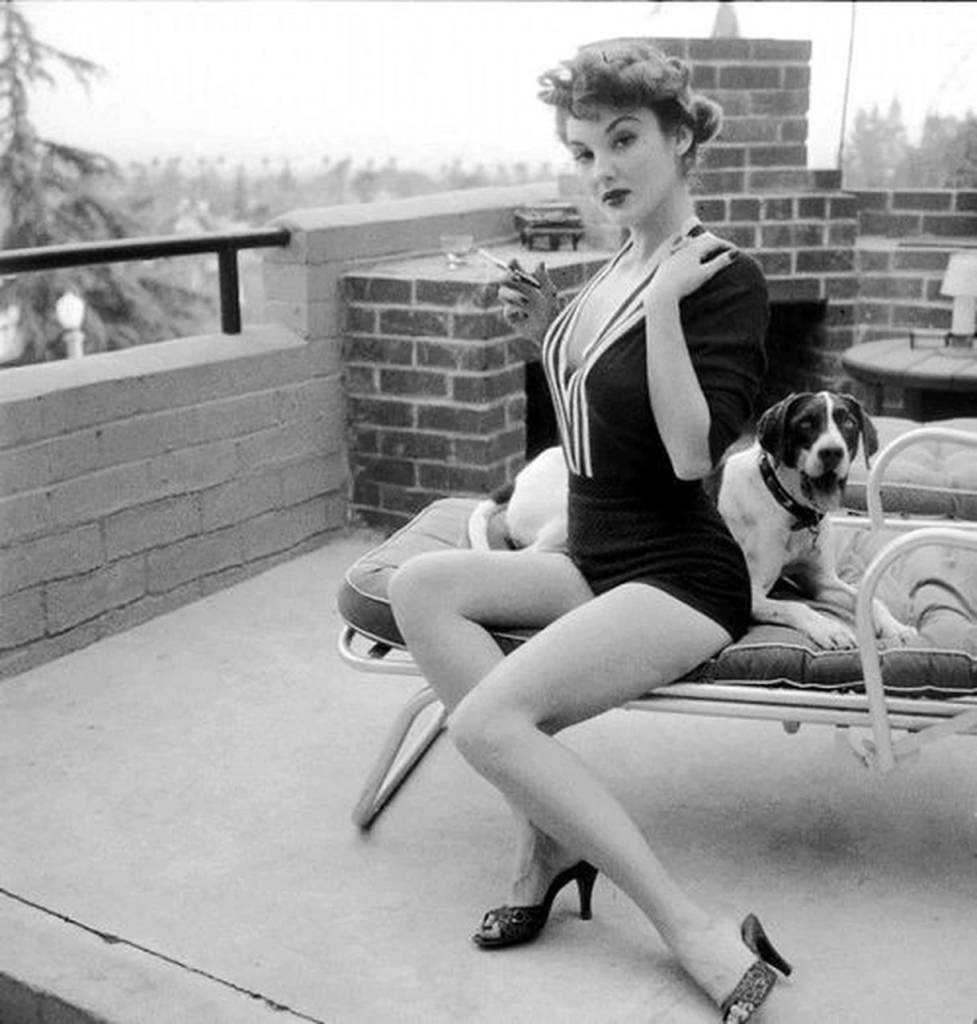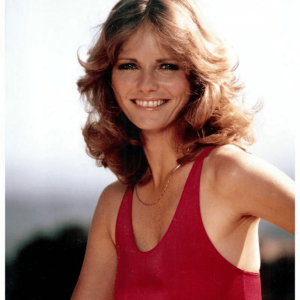Before she ever towered fifty feet tall on screen, Allison Hayes stood out in a crowd. Born Mary Jane Hayes on March 6, 1930, in Charleston, West Virginia, she started her journey far from the soundstages of Hollywood. After relocating to Washington, D.C., she graduated from Calvin Coolidge High School in 1948 and won the Miss District of Columbia title just a year later. That win earned her a place at the 1949 Miss America Pageant—and with it, a glimpse into the spotlight.
Television soon followed, and it wasn’t long before Hayes packed her bags for California. She was headed west—not just chasing fame, but aiming to make something of herself on her own terms.

The Rise (and Bruises) of a Hollywood Starlet
By 1954, Allison Hayes had landed a contract with Universal Pictures and adopted her now-famous stage name. Her debut film, Francis Joins the WACS, was a military comedy involving a talking mule—a far cry from red carpets, but a start nonetheless. That same year, she starred in Sign of the Pagan opposite Jack Palance, only to suffer a serious injury on set. A few broken ribs later, she found herself sidelined—and eventually dropped by Universal in 1955.
But Hayes wasn’t done. Not by a long shot.
She made a strong comeback at Columbia Pictures, taking on more complex roles in films like Chicago Syndicate and Count Three and Pray (1955), where she played a Southern aristocrat with confidence and grace. Although co-star Joanne Woodward earned more acclaim at the time, Hayes’s performance was quietly compelling—nuanced and memorable.
Video: The Life and D*ath of Allison Hayes
A Scream Queen Before Her Time
Throughout the late ’50s, Allison Hayes became a household name in the B-movie world. She starred in a string of low-budget horror and sci-fi hits, taking on bold and daring roles in The Undead and The Unearthly in 1957, and Zombies of Mora Tau, where she literally went toe-to-toe with the walking undead.
But it was 1958’s Attack of the 50 Foot Woman that made her a pop culture icon.
As Nancy Archer, Hayes didn’t just play the victim—she transformed into a towering symbol of revenge, rage, and power. What critics once wrote off as camp has now been reclaimed by modern audiences as a cult feminist favorite. Her performance as a scorned woman turned giantess remains a defining image of mid-century genre cinema.
TV Stardom and Close Calls

As the ’60s rolled in, Hayes transitioned to television. She made recurring appearances in Bat Masterson, Rawhide, Perry Mason, 77 Sunset Strip, Laramie, and The Untouchables. Her professional relationship with Raymond Burr—who starred in Perry Mason—helped her land multiple appearances on the show.
She even joined the cast of General Hospital in the mid-1960s, a soap opera staple that introduced her to a new wave of fans. Her final on-screen roles included an appearance alongside Elvis Presley in Tickle Me (1965) and two episodes of Gomer Pyle, U.S.M.C. in 1967.
Despite these successes, her career never quite hit the A-list. But her real-life role—as a fighter for justice—was just beginning.
A Mystery Illness No One Could Solve
Behind the scenes, Allison Hayes faced a health battle that would consume her final decade. She began experiencing extreme fatigue, muscle weakness, intense pain, and even partial paralysis. Doctor after doctor dismissed her complaints. Some called it emotional. Others labeled it “psychosomatic.”
Over two dozen physicians failed to identify the cause.
Hayes, determined to find answers, took matters into her own hands. She traced the onset of her symptoms to a calcium supplement prescribed by Dr. Henry Bieler. After testing, she discovered it contained dangerous levels of lead—190 parts per million. A toxicologist confirmed what no one else would: she was suffering from chronic lead poisoning.
Taking On the FDA: Advocacy Born from Suffering
Video: Sexy Allison Hayes: Secret to Stardom Uncovered!
Rather than retreat into silence, Hayes fought back. She waged a one-woman campaign against the loose regulation of health supplements, targeting the FDA and urging them to enforce stricter oversight on imported products.
Though resistance met her at nearly every turn, Hayes never gave up. Her persistence eventually bore fruit. In the years following her passing, the FDA implemented more rigorous testing standards for heavy metals in supplements—citing her case as a pivotal example. It was a bittersweet victory. While she wouldn’t live to see the full impact of her efforts, her voice helped protect countless lives.
The Final Chapter: Resilience to the End

In late 1976, Allison Hayes was diagnosed with leukemia—a likely complication from years of lead exposure. Her final days were difficult. On February 26, 1977, she was admitted for a blood transfusion. She developed flu-like symptoms, and within hours, she was gone. Just a week short of her 47th birthday.
Before her passing, Hayes wrote a haunting poem asking how she’d be remembered. She may have feared being forgotten, tucked away as a forgotten figure from old horror flicks. But history tells a different story.
Her Legacy: More Than Just a 50-Foot Woman

Allison Hayes’s influence reaches far beyond cult movie marathons and poster art. She’s remembered not only for her striking beauty and commanding screen presence but for her bravery in challenging a powerful institution like the FDA. Her health crisis sparked real reform, and her story remains a powerful reminder of what happens when individuals refuse to stay silent.
Today, Attack of the 50 Foot Woman is more than a quirky sci-fi flick—it’s a cultural artifact reclaimed as a feminist metaphor. And Allison Hayes? She’s not just remembered. She’s respected.
Conclusion: A Beauty Queen, A Fighter, A Trailblazer

Allison Hayes wasn’t just another Hollywood starlet. She was a warrior—on screen and off. Her career might have unfolded in B-movie backlots and television sets, but her determination to seek justice gave her story lasting weight.
She faced health struggles, industry setbacks, and public doubt—but kept pushing. And in doing so, she turned pain into purpose, leaving behind not just a film legacy but a lasting impact on public health policy.
If legacy is measured by courage, impact, and the ability to challenge the system, then Allison Hayes didn’t just stand tall on screen—she stood even taller in real life


